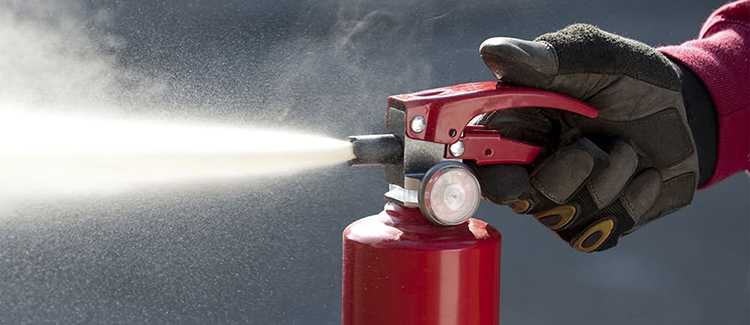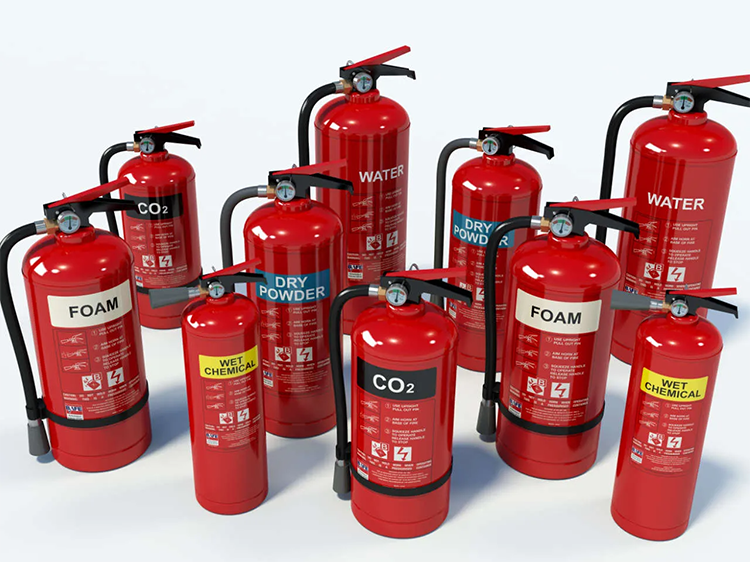How Much Does a Water-Based Fire Extinguisher Cost? Understanding Water-Based Fire Extinguishers and How to Choose the Right One
author:admin
View:
发表时间:2025-01-09 16:45:18
Fire extinguishers are an essential part of modern fire safety. With increasing awareness of environmental protection and safety, water-based fire extinguishers have become a popular choice. They are favored for their efficient fire suppression and eco-friendly, safe properties, making them widely used in residential, commercial, and industrial settings. So, how much does a water-based fire extinguisher generally cost? What factors should you consider when choosing one? This article will provide you with an overview of water-based fire extinguishers, their benefits, and key factors to consider when making a selection.

What is a Water-Based Fire Extinguisher?
A water-based fire extinguisher is a device that uses water as the extinguishing agent to put out fires. It is mainly used for Class A fires, which involve solid combustible materials such as wood, paper, textiles, and plastics. Compared to dry powder or CO2 fire extinguishers, water-based fire extinguishers offer several advantages, such as being environmentally friendly and safe. They are particularly suitable for environments with high environmental standards. Water-based fire extinguishers suppress fire by spraying water to rapidly lower the temperature of the fire source, preventing the fire from spreading.
Advantages of Water-Based Fire Extinguishers
Strong Environmental Protection
Water-based fire extinguishers use water as the extinguishing agent, which contains no harmful chemicals. As a result, they do not pollute the environment after use, making them ideal for spaces with high environmental requirements, such as offices and retail stores.High Safety
Compared to dry powder or CO2 fire extinguishers, water-based fire extinguishers are safer to use. They do not release toxic gases and are not harmful to human health. They are safe for use in homes and places with children or pets, making them an ideal choice for residential spaces.Efficient Fire Suppression
Water-based fire extinguishers offer quick and effective fire suppression, especially for solid combustible materials. Their operation is relatively simple, making them suitable for emergency response to initial-stage fires.
How to Choose a Water-Based Fire Extinguisher?
When choosing a water-based fire extinguisher, it’s important to consider factors beyond just price. Here are some key factors to guide your selection:
Intended Use and Location
Consider the size and fire risk level of the space where the extinguisher will be used. For home use or small offices, a smaller water-based fire extinguisher will suffice. However, for commercial or industrial spaces, a larger capacity fire extinguisher may be necessary to ensure longer-lasting fire suppression.Capacity of the Extinguisher
Water-based fire extinguishers come in various capacities, typically ranging from 1 to 10 kilograms or more. For residential or small office settings, a 1-2 kg fire extinguisher is usually sufficient. For larger commercial spaces, warehouses, or industrial areas, it's advisable to choose a larger extinguisher to ensure effective fire suppression over a larger area.Certifications and Quality
It's crucial to select a water-based fire extinguisher that meets national fire safety standards, such as the 3C certification. This guarantees the extinguisher’s reliability in the event of a fire. Additionally, choosing a well-known brand can reduce the risk of equipment failure during an emergency.Maintenance and Servicing
Regular inspection and maintenance are essential to ensure that water-based fire extinguishers are ready for use when needed. Be sure to check the maintenance requirements and warranty terms of the product before purchasing.
Applications of Water-Based Fire Extinguishers
Water-based fire extinguishers are widely used in a variety of environments. They are especially effective for fighting Class A fires. Here are some common scenarios where they are used:
Homes: Kitchens, living rooms, and other areas in the home are common places where small fires may occur. A compact water-based fire extinguisher can help put out the fire before it spreads.
Commercial Spaces and Offices: In places with a higher number of people, such as shopping malls and office buildings, water-based fire extinguishers are crucial for controlling fires in their early stages and preventing them from spreading.
Warehouses and Industrial Settings: Locations with large amounts of combustible materials, such as factories and warehouses, are ideal for using larger capacity water-based fire extinguishers to effectively suppress potential fires.
How to Use and Maintain a Water-Based Fire Extinguisher
When using a water-based fire extinguisher, follow these steps:
Remove the Safety Pin: Pull out the safety pin on the fire extinguisher to prepare for use.
Aim at the Base of the Fire: Aim the nozzle at the base of the fire, not at the flames themselves.
Press the Handle and Spray: Squeeze the handle to release the water, and spray directly at the fire's base. Maintain an appropriate distance to ensure continuous water flow and effective suppression.
After use, it’s important to check the fire extinguisher for any damage or leaks. Even if the extinguisher has not been used, it should be inspected regularly to ensure it remains in good condition and ready for use in case of emergency.
Conclusion
Water-based fire extinguishers are highly efficient, safe, and environmentally friendly fire suppression devices that are suitable for various settings. When choosing a water-based fire extinguisher, it's essential to consider factors such as its intended use, capacity, quality, and maintenance requirements, rather than focusing solely on price. Selecting the right extinguisher will ensure that you are prepared to handle a fire emergency effectively and safely.
Whether for home, office, or industrial use, water-based fire extinguishers provide a reliable and environmentally responsible solution to fire safety. By understanding the features and advantages of these extinguishers, you can make an informed choice to ensure the safety of your home, employees, and assets.


